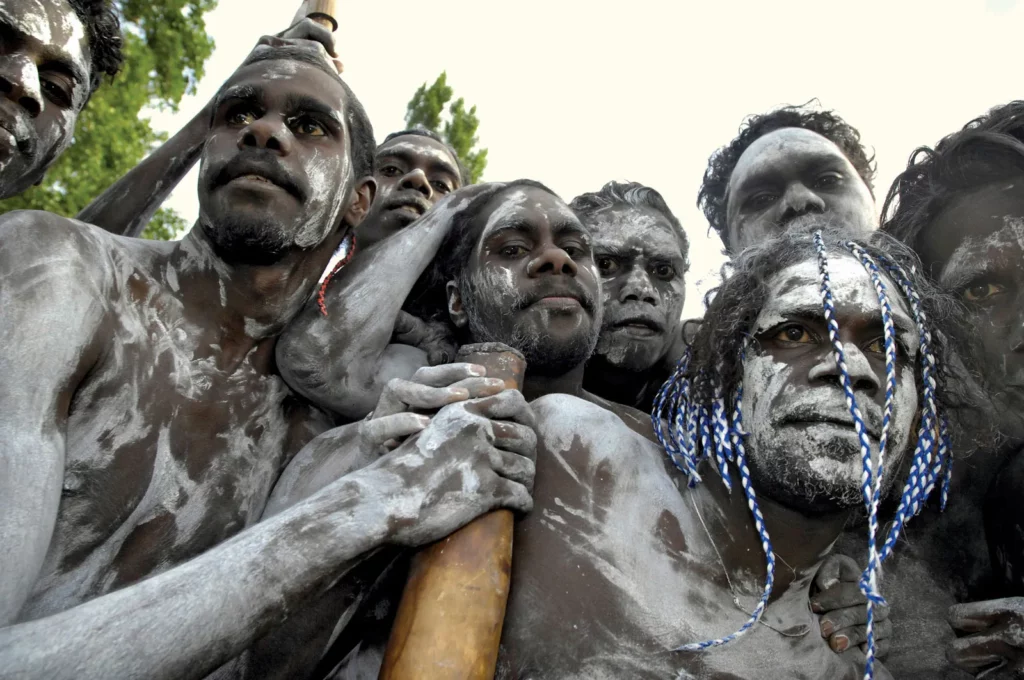Aborigines are the proud keepers of what is arguably the world’s oldest continuous culture. Their ancestors come from various communities, each with its own distinct blend of cultures, customs, and languages. Before the European invasion in 1788, there were over 250 Indigenous nations, each with its own clan. Did you know how long the Aborigines have inhabited Australia?
Aboriginal people have inhabited mainland Australia for at least 65,000 years. It is widely assumed that it predates the human settlement of Europe and the Americas.
What is the Evidence of the First People?
The date of the continent’s first occupation in Australia is constantly changing. New excavations and improved dating techniques push the date even further back in time.
Footprints in the sand, artifacts in ancient shelters, and items like this piece of ochre all provide evidence of the continent’s vast human history.
However, this is only part of the story because Aboriginal people believe they have been in their country since the beginning of time and that before that, the continent was a ‘land before time.’
White fellas like theorizing we come from somewhere else other than Australia to lessen our connection to country. We are from here. Our knowledge of our history is embedded in our blood and our country. White fellas knowledge of our history is only as good as their technology.
Aunty Val Coombs, Quandamooka Elder, 2012
Where are the Settlements of Aborigines Located?
Aboriginal people have lived on the Australian mainland for at least 65,000 years. This is thought to have occurred before the human colonization of Europe and the Americas.
Dating methods that are becoming more sophisticated are assisting us in gaining a more accurate understanding of how people came to be in Australia. Northern Australia has some of the oldest archaeological sites.
This ochre, discovered at the Madjebebe (Malakunanja II) site in Arnhem Land, is thought to be
Other ancient sites, such as Lake Mungo in New South Wales and Devil’s Lair in southwest Western Australia, are still being discovered and researched across the continent. (Source: National Museum of Australia)
Is it Insensitive or Racist to Refer to Indigenous Australians as Aborigines?
The term aborigine is widely perceived as insensitive because it has racist connotations from Australia’s colonial past and lumps people from diverse backgrounds into a single group; the term aborigine is widely perceived as insensitive. Saying aboriginal person, aboriginal, or Torres Strait Islander increases your chances of making friends.
If possible, use the person’s clan or tribe name. When referring to Aboriginal and Torres Strait Islander people, it’s best to use either Indigenous Australians or Indigenous people.
(Source: Amnesty)
What Happened to the Aborigines When the Europeans Came?
When European colonization began in 1788, the impact on Australia’s Indigenous communities was devastating. By 1900, their population had plummeted from around 750,000 to just 93,000.
Thousands died as British settlers drove people off their lands and introduced deadly diseases like measles, smallpox, and tuberculosis. Indigenous Australians were separated from the rest of society and forced to adopt British customs while rejecting their own culture. Many parents had their children taken away from them.
The population began to recover in the early 1900s, and by 2011, there were an estimated 669,900 Indigenous people in Australia, accounting for approximately 3% of the total population.
(Source: Amnesty)
